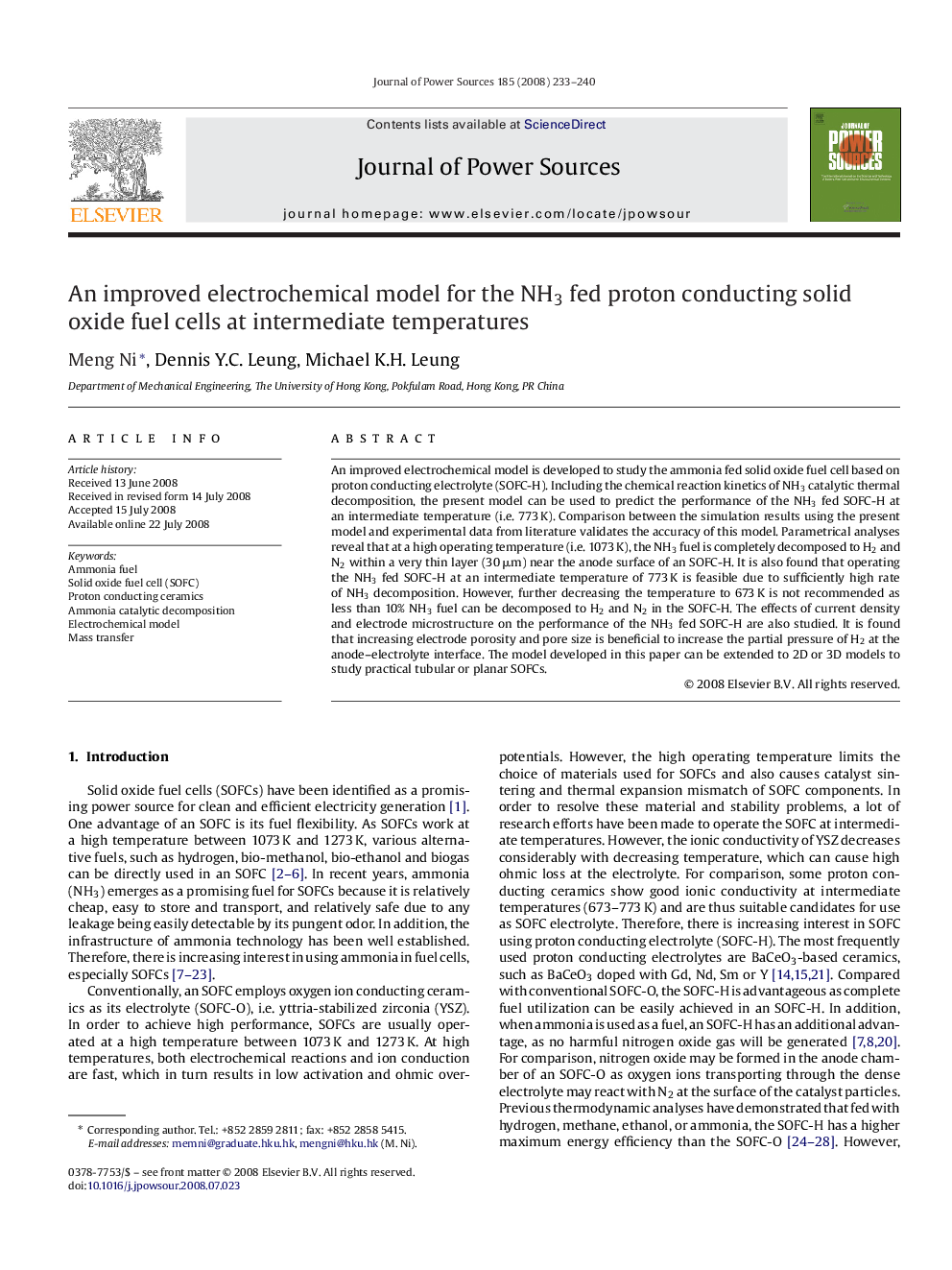| Article ID | Journal | Published Year | Pages | File Type |
|---|---|---|---|---|
| 1294408 | Journal of Power Sources | 2008 | 8 Pages |
An improved electrochemical model is developed to study the ammonia fed solid oxide fuel cell based on proton conducting electrolyte (SOFC-H). Including the chemical reaction kinetics of NH3 catalytic thermal decomposition, the present model can be used to predict the performance of the NH3 fed SOFC-H at an intermediate temperature (i.e. 773 K). Comparison between the simulation results using the present model and experimental data from literature validates the accuracy of this model. Parametrical analyses reveal that at a high operating temperature (i.e. 1073 K), the NH3 fuel is completely decomposed to H2 and N2 within a very thin layer (30 μm) near the anode surface of an SOFC-H. It is also found that operating the NH3 fed SOFC-H at an intermediate temperature of 773 K is feasible due to sufficiently high rate of NH3 decomposition. However, further decreasing the temperature to 673 K is not recommended as less than 10% NH3 fuel can be decomposed to H2 and N2 in the SOFC-H. The effects of current density and electrode microstructure on the performance of the NH3 fed SOFC-H are also studied. It is found that increasing electrode porosity and pore size is beneficial to increase the partial pressure of H2 at the anode–electrolyte interface. The model developed in this paper can be extended to 2D or 3D models to study practical tubular or planar SOFCs.
